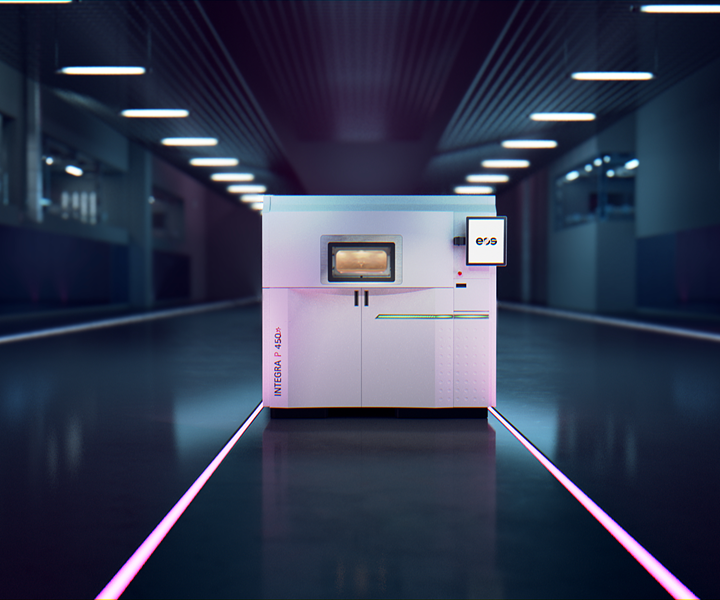Additive Manufacturing: New Mid-Range Polymer Industrial 3D Printer
INTEGRA P 450 is made for a wide variety of SLS materials, including polymers with processing temperatures of up to 300°C.
EOS North America released its INTEGRA P 450, a mid-range temperature, powder bed, polymer 3D printer. The INTEGRA P 450 selective laser sintering (SLS) platform is said to bridge the gap between a small series production printer and a true serial additive manufacturing platform.
Featuring process temperatures of up to 300°C, the INTEGRA P 450 offers a broad range of SLS material flexibility combined with an 8-zone quartz heating system, where each zone can be independently controlled for enhanced precision, consistent quality and more efficient use of build volumes. The printer also has an improved process chamber design that enhances thermal uniformity during builds for production-caliber performance. Its future-proof, modular design, that includes an exchangeable optics tray and build volume, was created with extensive input from service professionals in order to enhance serviceability and reduce downtime. The platform also integrates a thermal imaging camera that provides real-time thermal analysis of part beds and recording of the entire build.
David Leigh, COO of EOS North America, said that every aspect of the INTEGRA P 450’s design – from its serviceability and material flexibility to the thermal imaging camera and workflow-based approach – was thoughtfully measured against customer feedback to create a machine that can easily scale and bridge the gap, from R&D and prototyping, to serial production.
The INTEGRA P 450’s software architecture is built around the workflow of data preparation for industrial 3D printing, allowing full integration into automated workflows for Industry 4.0. Increased productivity also comes by way of new plane segmentation capabilities, allowing for different layer thicknesses ranging from 0.10 mm to 0.18 mm per layer within a single part. The segmentation functionality also enables the splitting of a part along a plane so it can be shifted in z-level to define part segments with different exposure requirements for quality and productivity. This means engineers can define segments based on the need for quality or speed and assign optimal machine parameters.
Potential market segments include aerospace, medical, energy and more.
Orders are already being accepted, with availability currently limited to North American markets. The company will eventually launch the platform in Europe and other regions, Leigh said.

INTEGRA P 450 Polymer Industrial 3D Printer
Related Content
-
KraussMaffei Nears Completion of Corporate Headquarters Move
The 185-yr old German maker of plastics processing machinery is shifting to a more than 200,000-m2 greenfield site in Parsdorf.
-
3D Printed Spine Implants Made From PEEK Now in Production
Medical device manufacturer Curiteva is producing two families of spinal implants using a proprietary process for 3D printing porous polyether ether ketone (PEEK).
-
Additive Technologies for Injection Mold Tooling Ride Tailwinds
NPE2024: Lowering barriers to additive manufacturing adoption in toolmaking.






